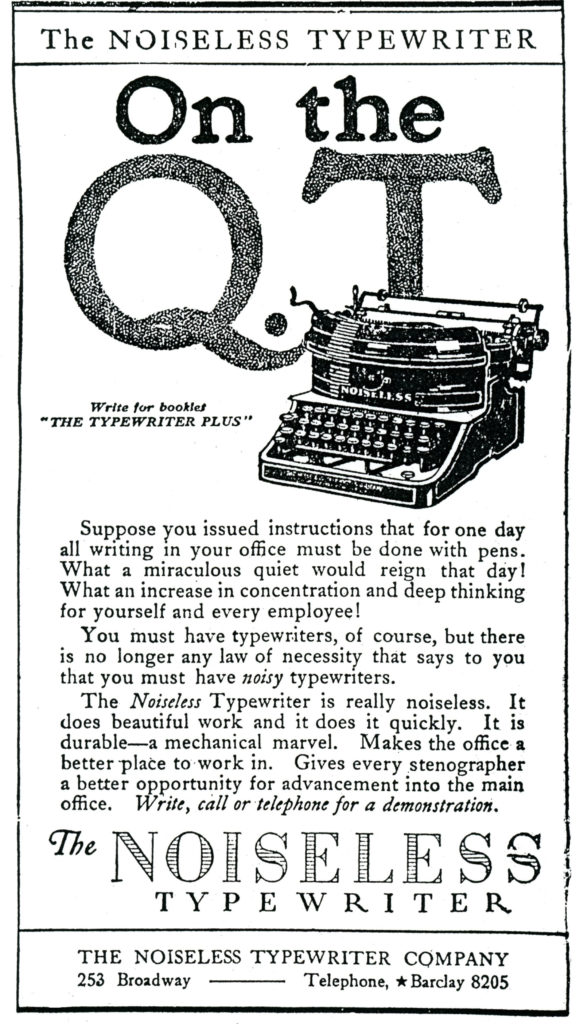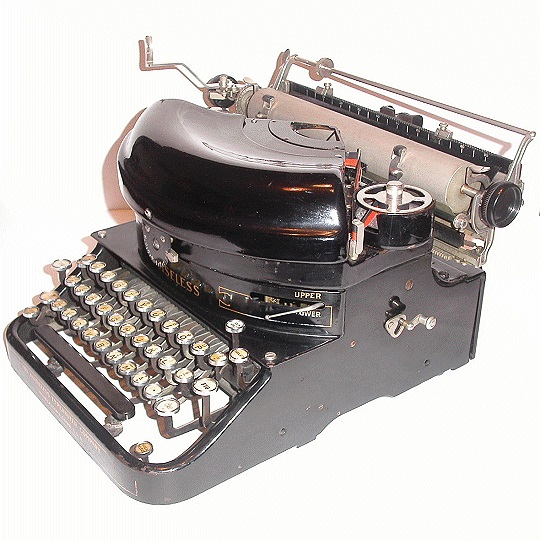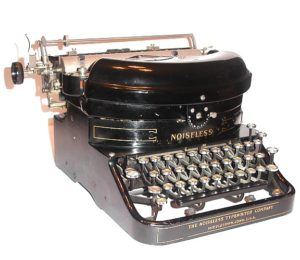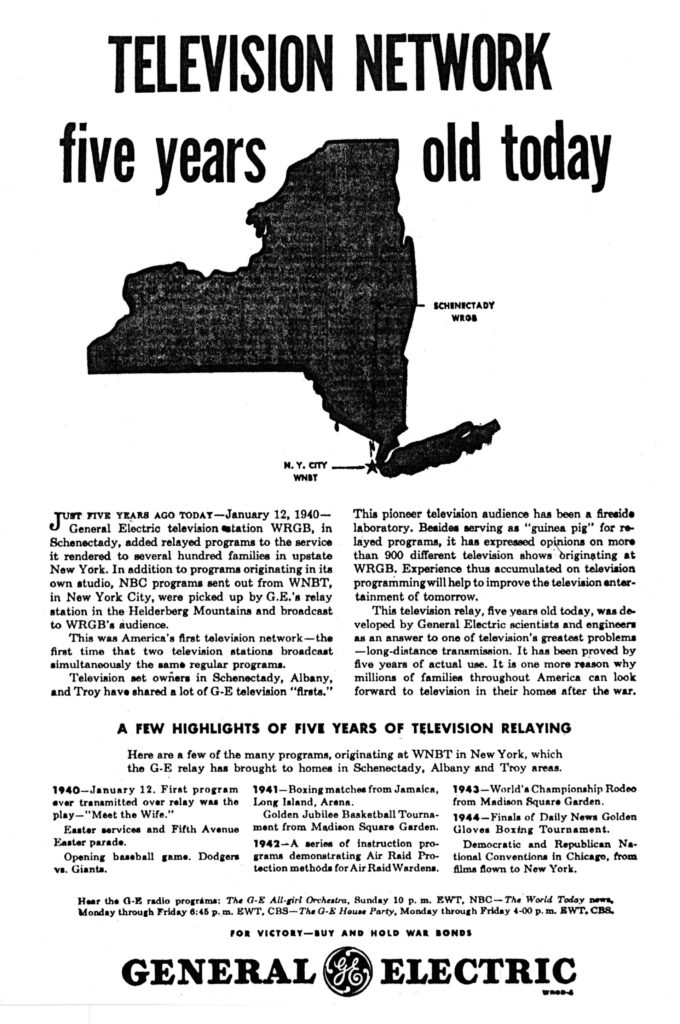An emblematic aspect of mid-twentieth-century movies and television programs which portrayed – whether seriously; whether in parody – corporate “office” settings, was the depiction of row, upon row (upon another row) of secretarial, clerical, or administrative personnel, each busily typing away upon their own typewriter or calculating (“adding”) machine.
A humorous example of this effect occurs in the Twilight Zone episode “Mr. Bevis“, which – starring Orson Bean as protagonist James B.W. Bevis – was broadcast on June, 3, 1960. A representative “office” scene can be viewed between 3:55 and 4:44, where silence is cleverly used to connote an abrupt change in atmosphere.
While the the purely visual aspect of such scenes – through their depiction of conformity and regimentation – could be humorously cynical, the sounds generated in such settings – a fusillade of overlapping clickety-clack * pause * clickety-clack * pause * riinnng-of-a-bell (end of line approaching! carriage return impending!) * clickety-clack (and, repeat) struck a deeper chord: The viewer did not actually have to “view” the scene to understand its nature. Sound by itself was enough to communicate setting, characters, and sometimes give an inkling of plot.
It seems that “sound”, per se, has long been an issue in the business world: whether one hundred years ago; whether in movies and television; whether through the “white noise” deliberately permeating the offices of contemporary corporations.
An example of this appears below: An advertisement for “The Noiseless Typewriter” that appeared in The New York Times on June 24, 1918.
George Fudacz’s “The Antikey Chop” website clearly presents the history of the Noiseless Typewriter Company and its products. The Noiseless Typewriter was the collaborative invention of Wellington Parker Kidder (1853-1924) and George Gould Going (1872-1954), with their firm being incorporated in January of 1909. Their company merged with the Remington Typewriter Company in 1924 “to form Remington-Noiseless, a subsidiary of The Remington Typewriter Company.”
As described at Richard Milton’s Portable Typewriters website (and as seen in the advertisement from the Times) “…the physical shape of the noiseless portable happened to fit perfectly the streamlined Art Deco contours favoured by designers in the 1920s and 1930s and the resulting Noiseless Portable is considered by many collectors to be one of the most beautiful typewriters ever designed.”
 The Noiseless Typewriter
The Noiseless Typewriter
On the
Q.T.
Write for booklet
“THE TYPEWRITER PLUS”
Suppose you issued instructions that for one day all writing in your office must be done with pens. What a miraculous quite would reign that day! What an increase in concentration and deep thinking for yourself and every employee!
You must have typewriters, of course, but there is no longer any law of necessity that says to you that you must have noisy typewriters.
The Noiseless Typewriter is really noiseless. It does beautiful work and it does it quickly. It is durable – a mechanical marvel. Makes the office a better place to work in. Gives every stenographer a better opportunity for advancement into the main office. Write, call or telephone for a demonstration.
The NOISELESS
TYPEWRITER
THE NOISELESS TYPEWRITER COMPANY
253 Broadway —– Telephone ★ Barclay 8205
______________________________
The images below, from the Noiseless Typewriters website, are of a Noiseless Typewriter (model) 4 (serial number 84565) manufactured circa 1919.

 References
References
Mr. Bevis (Description of episode at Wikipedia)
Mr. Bevis (Full Episode at DailyMotion.com)
Noiseless Portable (at The Virtual Typewriter Museum)
The Noiseless Portable (at The Antikey Chop Typewriter Collection)
The Noiseless Typewriter (at Portable Typewriters)
